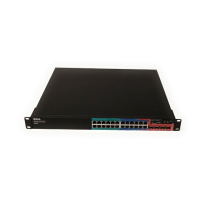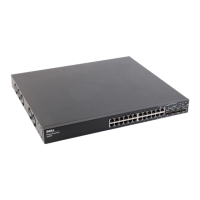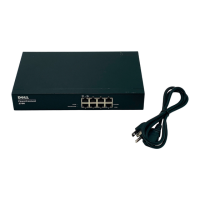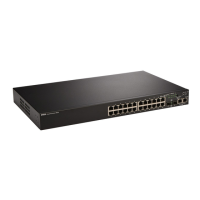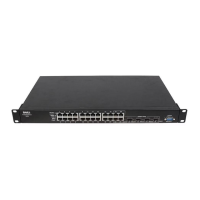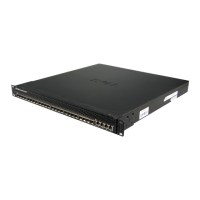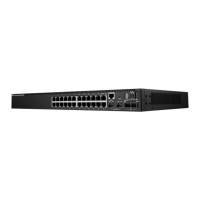350 Configuring Switching Information
–
Learning
— The LAG is in the learning mode and cannot forward traffic, but it can learn new
MAC addresses.
–
Forwarding
— The LAG is currently in the forwarding mode, and it can forward traffic and learn
new MAC addresses.
–
Broken
— The LAG is currently malfunctioning and cannot be used for forwarding traffic.
•
STP Root Guard
— Enables or disables STP Root Guard. The default is disable.
•
Role
— Displays the role this port has in the STP topology.
•
Path Cost
— Specifies amount the LAG contributes to the root path cost. The path cost is adjusted to
a higher or lower value, and is used to forward traffic when a path is being rerouted. The range is
0–200000000. The default is 0.
•
Priority
— Specifies priority value of the LAG. The priority value influences the LAG choice when a
bridge has two looped ports. The priority value is between 0–240. The default value is 128.
•
External Path Cost
— Specifies the External Path Cost to a new value for the specified port in the
spanning tree. Enter 0 to set the external path cost value automatically on the basis of Link Speed. The
default value is 0.
•
Loop Guard
— Prevents a LAG from erroneously transitioning from blocking state to forwarding when
the LAG stops receiving BPDUs. The LAG is marked as being in loop-inconsistent state. In this state,
the LAG does not forward packets. The possible values are Enable or Disable.
•
TCN Guard
— Enabling the TCN Guard feature restricts the LAG from propagating any topology
change information received through that LAG. This means that even if a LAG receives a BPDU with
the topology change flag set to true, the port will not flush its MAC address table and send out a BPDU
with a topology change flag set to true.
•
Auto Edge
— Enabling the Auto Edge feature allows the LAG to become an edge port if it does not
see BPDUs for some duration.
•
Designated Bridge ID
— Displays designated bridge ID.
•
Designated Port ID
— Displays designated port ID.
•
Designated Cost
— Displays cost of the port participating in the STP topology. Ports with a lower cost
are less likely to be blocked if STP detects loops.
Displaying the STP LAG Table and Configuring STP LAG Settings
1.
Open the
STP LAG Settings
page.
2.
Click
Show All
.
The
STP LAG Table
displays.

